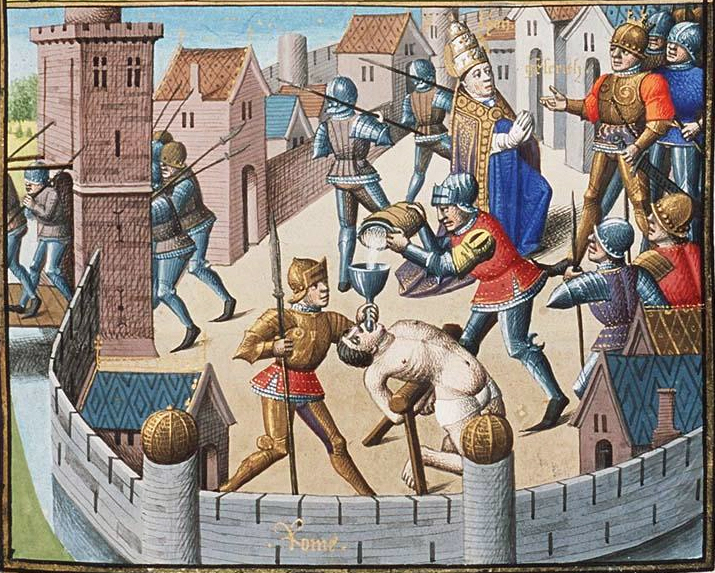The Vandals - deserving of their bad reputation?
The word “vandal” or “vandalism” immediately brings to mind images of destruction, defacement of public areas, and mindless damage to property.
Based on this description, I think that we can all agree that it’s not exactly a flattering definition. But, like the rest of the words that we regularly use, we don’t really question its origin.
So, what is the genesis of vandal and does it deserve the negative connotations that it carries?
The origin of “vandalism” and “vandal”
Like many modern English words, vandalism derives from the French word vandalisme, which was originally used in a 1794 report that described how pieces of artwork were destroyed during the French Revolution. Yet the word Vandal has quite different roots, as it has been used as an English noun since the mid 16th Century to detail a person that wantonly damaged property that was beautiful and admired.

However, before it was used as a noun, vandal was known in English as the term for the German tribe that sacked ancient Rome, a group whose name became so interchangeable with ruination that it became its synonym. Yet, due to the considerably one-sided reports of the Vandals, we must ask the question – did Vandals truly deserve their pervasive reputation?
Who were the Vandals?
The Vandals are thought to have originated in Scandinavia before migrating south and settling in Central Europe, where they became farmers and cattle-herders.
In the 5th Century, they were forced to relocate again towards the Roman provinces of Africa (areas now known as Tunisia and Algeria). Although they took these areas by force, it is important to note that they did so out of necessity; conflicts in the region now known as Spain and Portugal made it impossible for the Vandals to stay, as their very survival was at risk.
Having captured and made Carthage their capital in 439 A.D., the Vandals were in the direct proximity and influence of the Roman Empire and clearly wanted to claim some of their wealth and cultural prosperity for themselves. However, their manner of going about it may have left much to be desired.

Before we continue, it may be worth acknowledging that the Vandals were a Christian tribe; specifically, Arianism, which was popular at that point in time. However, Arianism took the stance that Christ was secondary to God, and this viewpoint was eventually deemed heretical by the Roman Catholic Church. Thus - as many wars start - the Vandals were religiously opposed to the Roman Empire.
The Vandals sack of Rome
In 455 A.D., the Romans apparently broke an agreement with Vandal King Genseric. Resultingly, the Vandals decided to march on the weakened city of Rome.
Although the Vandals sack of Rome certainly made it into the history books, it might not have been the destructive affair that it was made out to be.
Even though they were considered heretics by the Christian church, Pope Leo I was open to negotiations with them. The Vandals were reasonable to a certain degree and agreed not to destroy Rome as long as they were allowed to enter and plunder it as much as they wished.

As they were primarily interested in the treasures and wealth of Rome, the Vandals, as agreed, left the city’s buildings as they found them. While doing so, according to some reports, the Vandals took many Roman citizens captive, which likely did their reputation little favour.
A historian from Byzantine recorded that the Vandals burned a church while plundering the city, and it was further reported that numerous ships left Rome filled with Roman captives that ultimately ended up sold as slaves in Africa. Nevertheless, it should be noted that these are one-sided reports, as there are no documents from the Vandals' perspective.

The Vandals initial sack of Rome led to many years of retaliation, which they were able to keep at bay between the years 460 and 475 AD. However, the Romans were intent on reclaiming their treasures and, eventually, they managed to invade the areas of North Africa where the Vandals resided and conquered the region. Despite this, the Vandals legacy has persisted and is still associated with acts of destruction and damage. Whether or not this is a balanced perspective, however, is an answer hidden in history.
Are you curious to know whether you have an inner Vandal hidden within your DNA? Find out today with My True Ancestry!
